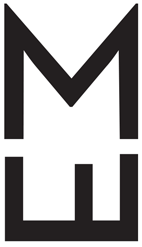Three Collections from his Personal Archive:
1. Jewellery & Jewellery-esque Objects.
2. 'Street Sweets' Photographs.
3. Betting Shop Pens.
The collections are of objects that have been lost or discarded on the street. The object found is transformed by re-framing, through the frame of the photograph or the container of the archive.
Street Sweet [Photo Credit Paul Dyer]
The photograph transforms the scale and context of the object. The archival container allows the object to reconfigure itself in relationship to adjacent objects; the object is 'free' to be whatever is it, wander around the box, attach itself to other objects.
The collections inform a collective memory. The objects tell a story about the person who dropped it, and about the condition of the society it exists in. There is a 'forensic aspect', the object can be analysed and identified, there may be traces of the last person who touched it.

Street Sweet [Photo Credit Paul Dyer]
As topographical traces, an increased frequency of betting pens on the ground signifies the presence of a betting shop, an increase in sweets signifies the presence of a corner store or a bus stop approaching.
Street Sweet [Photo Credit Paul Dyer]
The categorisation method is a photograph of the object, a micro-plan of object on the site.
Storage is by zip-lock bags (sealed, transparent, exhibited), and boxes (protective, opaque, masked).

The Archive of a Publishing House.

The flow chart above shows the process of archiving and the process of retrieval of this Publishing House. The archival system has evolved with changing technology of the both the artwork and means of categorisation. Within this system there also exist offshoot archives, which capture an archival impulse in time.

Bound Volumes [Photo Credit Paul Dyer]
The Archive houses hand drawn illustrations, transparencies, prints, occasionally fabric samples, digital photography, bound volumes, and mark-up copies of magazines.
The Mark-up copies of the magazines are like a map of the archive, encoding directions to where the original artwork can be located.
Original artwork is stored in archival standard containers: plastic sleeves, glassine bags, envelopes, boxes.
The Archive is ordered chronologically by magazine name, month, year.

There are also offshoot or auxillary archives within the overall archive which follow their own logic. Hidden within the stacks are curious card index drawers and filing cabinets of prints by a particular photographer. The archival impulse here is where the artwork has been pulled from the main archive for republishing at some point in the past, and then retained as a group in an auxillary sub-collection.
There are the 'Personality Files', photographic prints of notable persons, filed in alphabetical order by name of person captured. These original prints have a beautiful weathered quality, marked with old tape and torn corners. Other filing cabinets contain the 'Contributors Records', early typed contracts and letters








